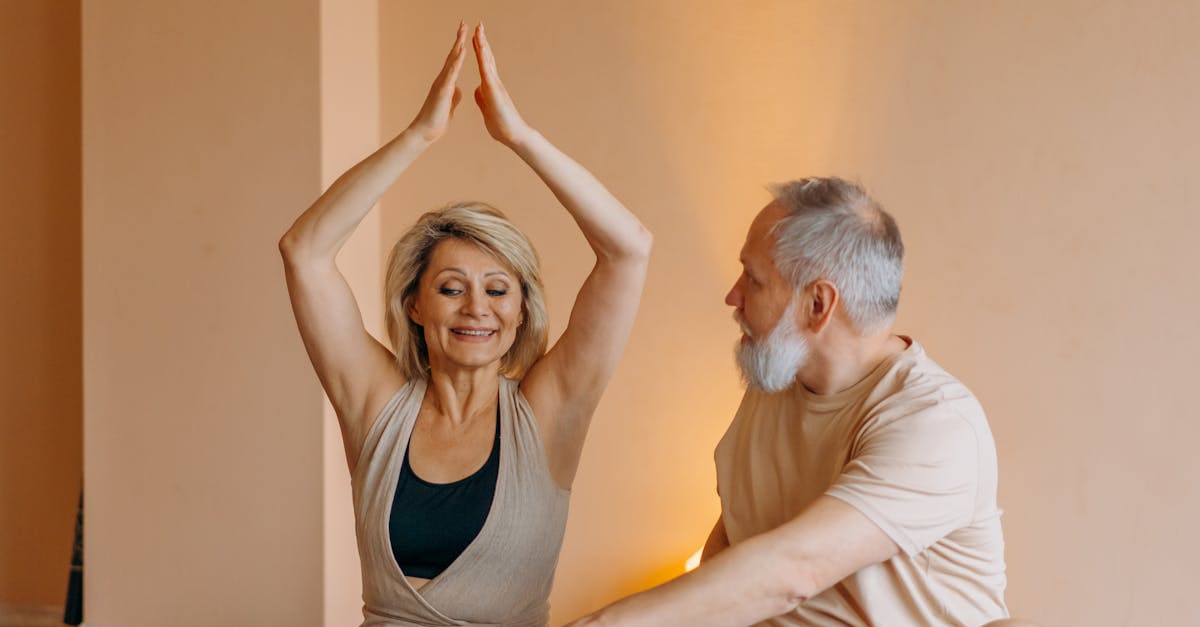Staying active is essential for women over 60, as regular exercise can improve mobility, strength, and overall health. The good news is that you don’t need a gym membership or expensive equipment to stay fit. This article presents a variety of effective exercises that can be done right at home, allowing you to maintain your fitness level and enjoy a healthier lifestyle.
| Exercise | Description |
|---|---|
| Chair Yoga | Gentle stretches and poses using a chair for support. |
| Walking | Simple yet effective, walking can be done indoors or outdoors. |
| Wall Push-Ups | A modified push-up that strengthens the upper body. |
| Seated Leg Lifts | Improves leg strength while seated. |
| Standing Calf Raises | Strengthens calf muscles and improves balance. |
| Balance Exercises | Activities that enhance stability and coordination. |
| Resistance Band Exercises | Light resistance training using bands for strength. |
| Stretching | Enhances flexibility and reduces muscle tension. |
| Core Strengthening | Exercises focusing on the abdominal and back muscles. |
| Dance | Fun and engaging way to stay active and improve mood. |
Chair Yoga
Chair yoga is a fantastic option for women over 60, providing a gentle way to stretch and strengthen the body. Utilizing a sturdy chair for support allows you to perform various yoga poses safely. This type of exercise improves flexibility, reduces stress, and promotes relaxation without the need for getting on the floor.

Walking
Walking is one of the easiest forms of exercise and can be adapted to fit any fitness level. Whether indoors in your home or outside in your neighborhood, walking regularly can help improve cardiovascular health, enhance mood, and maintain a healthy weight. Aim for at least 20-30 minutes a day, and feel free to break it up into shorter sessions if needed.

Wall Push-Ups
Wall push-ups are a modified version of traditional push-ups that are perfect for building upper body strength without straining your joints. Stand a few feet away from a wall, place your hands on the wall at shoulder height, and lower yourself towards the wall, then push back to the starting position. This exercise engages the chest, shoulders, and arms while being gentle on the body.

Seated Leg Lifts
Seated leg lifts are a simple yet effective exercise for strengthening the legs. While sitting in a chair, extend one leg straight out in front of you, hold for a few seconds, and then lower it back down. Repeat with the other leg. This exercise can help improve leg strength and mobility, making daily activities easier.

Standing Calf Raises
Standing calf raises are excellent for strengthening the calf muscles and improving balance. Stand with your feet shoulder-width apart and slowly raise your heels off the ground, balancing on your toes. Hold for a moment before lowering back down. This exercise is not only beneficial for strength but also helps in enhancing overall stability.

Balance Exercises
Incorporating balance exercises into your routine is crucial for preventing falls and improving coordination. Simple activities such as standing on one foot or walking heel-to-toe can significantly enhance your balance. Practicing these exercises regularly can contribute to greater stability in your daily movements.

Resistance Band Exercises
Resistance bands are versatile and easy to use at home. They provide light resistance that can help build strength in various muscle groups without the need for heavy weights. Simple exercises like bicep curls or seated rows can be performed using resistance bands, making them perfect for older adults looking to maintain muscle mass and strength.

Stretching
Stretching is an essential part of any exercise routine, especially for older adults. Regular stretching improves flexibility, reduces the risk of injury, and can alleviate muscle tension. Incorporate stretches for all major muscle groups, holding each stretch for 15-30 seconds to experience the full benefits.

Core Strengthening
Core strengthening exercises are vital for maintaining good posture and stability. Simple exercises such as seated marches or gentle torso twists can engage your core muscles effectively. A strong core supports your entire body, making everyday tasks easier and reducing the risk of back pain.

Dance
Dance is a fun way to stay active and boost your mood. Whether it’s following a dance video at home or simply moving to your favorite music, dancing helps improve cardiovascular fitness, coordination, and flexibility. It’s a joyful way to exercise without feeling like you’re working out.

FAQ
What type of exercises should I avoid as a woman over 60?
It’s important to avoid high-impact exercises that may put unnecessary stress on your joints. Activities such as running or jumping may not be suitable. Always consult with a healthcare provider before starting a new exercise routine.
How often should I exercise each week?
Aim for at least 150 minutes of moderate-intensity exercise each week, which can be broken down into 30-minute sessions five times a week. Include strength training exercises at least twice a week for best results.
Can I exercise if I have health concerns?
Yes, but it’s essential to consult with a healthcare professional before starting any new exercise program. They can help tailor an exercise plan that suits your individual health needs and limitations.
What are the benefits of exercising at home?
Exercising at home offers convenience, flexibility, and cost-effectiveness. It allows you to create a comfortable environment and set your own schedule, making it easier to stay committed to your fitness goals.
References:
– [CDC – Physical Activity Basics](https://www.cdc.gov/physicalactivity/basics/index.htm)
– [NIH – Exercise and Physical Activity](https://www.nia.nih.gov/health/exercise-physical-activity)
– [NIA – Exercise and Older Adults](https://www.nia.nih.gov/news/exercise-older-adults)



